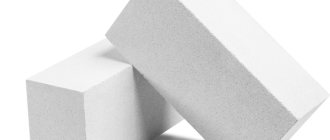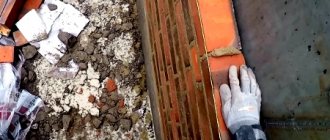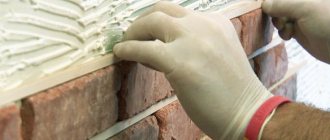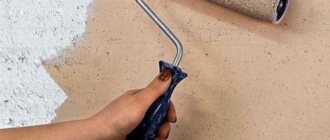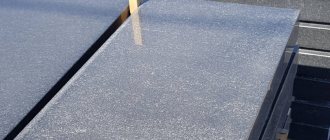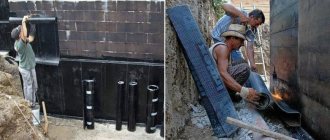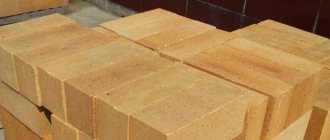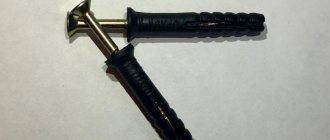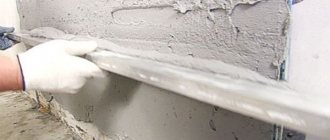Today we will pay attention to such a material as brick. Not just any brick, but fireclay fire-resistant brick . What is it for? It’s very simple; decorative stoves and fireplaces are used to add coziness and comfort to any home. They are needed not only to create a special microclimate in the house, but also to allow the owners to relax, sitting in front of the fireplace and looking at the flames that play in the fireplace. But fireclay refractory bricks help to realize all this. Not to mention the needs of various industries.
Brick is an integral part of almost any construction project. But the brick is much older than it might seem at first glance. Scientists have brick artifacts that date back 6 thousand years. And 5 thousand years ago in ancient Egypt, such bricks began to be fired in order to increase the quality and performance properties of the raw material. This is the name for a clay brick blank. The ability to burn such material improved it so much that the brick survived the years and still faithfully serves humanity. New types of bricks appear that have special properties, for example, fireclay bricks, clinker bricks or sand-lime bricks, but the principle itself remains unchanged.
Fireclay bricks are fireproof. Everything about this material
Having realized that firing clay gives it better properties, people began to increase the firing temperature and create powerful kilns. As a result of such experiments, refractory fireclay brick was born. It got its name thanks to its clay, kaolin, from which such bricks are made. And then it is fired in a furnace with a temperature above 1200°C. Today we will learn how to choose the right fireclay brick, what characteristics it should have and how to work with it. Our team of experts will share with you all the nuances of working with this material.
Thank you for being with us! Share comments, your stories and tips.
What is fireclay brick?
It became possible to buy refractory fireclay bricks not so long ago, only in the 19th century. It was then that it became possible to fire at high temperatures, thanks to the advent of high-temperature kilns. It was not by chance that we thought about creating such stoves. The thing is that some types of clay were not hardened at temperatures of 550-750°C. In search of a solution, furnaces capable of firing clay at higher temperatures began to appear.
It turned out that these types of clay contain finely dispersed aluminum species. To be able to process such clay, it was necessary to increase the firing temperature to 1250-1650 °C. Now it’s clear why the brick turned out to be fireproof and can withstand high temperatures. We will talk more about what such a brick is capable of and what maximum temperature it can withstand in the section “Properties and characteristics of fireclay bricks” .
Brick appearance
Refractory fireclay brick has a very well -recognized appearance. But one way or another, the appearance and color of the brick itself can vary. Due to the fact that almost all clays saturated with aluminum have light shades, therefore the usual appearance of fireclay bricks is associated with beige shades. The texture of the blocks is rough. But there are different types of fireclay bricks. There is fireclay brick, fireproof and red . In addition to aluminum impurities, such clay contains iron and copper. These metals give the clay and finished brick their reddish color.
Types of fireclay bricks
Regardless of the color of the brick itself, you can easily recognize it because it looks like old stone . chips, cracks and dark spots on the surface of the brick . Such dark spots, for example, appear due to metal that begins to foam in the oven and then hardens. Aluminum foam on light-colored bricks. Cracks also do not appear by chance. This is due to the loss of moisture from the clay. When firing standard bricks, the moisture partially remains in the brick, but when the firing temperature reaches 1200°C, the water completely evaporates.
This is one of the reasons for the increased hardness of blocks. At the same time, its fragility increases. This is the reason for the chipping. However, in masonry, combining their “forces”, fireclay bricks become real titans among building materials, possessing fire-resistant properties.
Lack of moisture is one of the main reasons why brick has high hardness . But along with hardness, the fragility of the material also increases. It is precisely because of this fragility that chips appear on products. But you can rest assured that when the bricks are laid, together they guarantee reliability . Fireclay fire brick is considered titanium among building materials that have fire-resistant properties.
Objectives of fireclay bricks
Of course, we cannot level all bricks with the same brush. Its composition, shape, characteristics and price will vary greatly depending on the area and scope of application.
Areas of application of fireclay bricks
Its valuable properties allow it to withstand high temperatures, and this makes it possible to use refractory fireclay bricks not only in private and industrial construction , but even in production and metallurgy . It also makes it possible to safely install decorative stoves, fireplaces, barbecues and other pleasures. Next, we will analyze all the types and performance characteristics of fireclay bricks so that you can easily choose the brick that is right for you.
What is fire brick and what is it used for?
This is an artificial stone of regular shape, intended for construction, cladding and insulation of open fires. In other words, this is an improved form of ordinary brick, during the production of which new properties of the material are achieved by adding fireclay powder from refractory clay and intensive firing:
High heat resistance.
Prolonged exposure to an open fire in a furnace or the heat of hot coals in a furnace is absolutely safe for refractory bricks, since they can withstand up to 1000-1200°C, and sometimes up to 1600°C without losing their original strength. Increased heat resistance. Thanks to this property, the material is able to withstand many cycles from strong heating to complete cooling without changing its qualities and shape. Low level of thermal conductivity. This means that a brick stove or fireplace stores accumulated heat for a long time, slowly and gradually releasing it to maintain a comfortable temperature in the room.
The only thing that limits the use of refractory bricks is high humidity (above 80%), which can have a destructive effect on its properties. But in order to choose the right brick in each specific case, you need to know its technical and operational characteristics.
Fireclay bricks and its types
As we said, fireclay refractory bricks have many varieties. This classification is needed so that you can choose the optimal brick and not overpay for those properties that you do not need. To understand better, let’s list by what criteria fireclay bricks can be distributed and classified.
Brick forming method
Fireclay bricks can have different shapes, as well as their own technological features during the production process. To ensure these differences in shapes, there are the following types of molding of fireclay bricks.
- Melting.
- Semi-dry molding.
- Casting from melts or slips.
- Thermoplastic pressing.
- Hot pressing.
Brick Configuration
Sometimes it is necessary to lay out a very complex architectural structure from brick, which means that different types of fireclay bricks will be required. So, there are the following varieties in shape and configuration.
- Straight (rectangular).
- Trapezoidal.
- Wedge-shaped.
- Arched profile.
Various shapes of fireclay bricks
Chemical composition of brick
Depending on what clay is used and what additives are added to the mixture, the physical properties of the finished fireclay brick and its heat resistance may differ. This also affects the color. There are the following types of fireclay bricks based on their chemical composition.
- Basic. The composition of such bricks includes fireproof fireclay clay. Its share in the mixture should be at least 70%. The filler can be coke or graphite powder. It is considered the main material. Its heat resistance allows it to be used as lining for furnaces in which Bessemer steel is smelted.
- Carbon. From the name it is clear that the composition of such bricks includes carbon. Its percentage in the mixture is quite high. Refractory carbon bricks are mainly used for lining blast furnaces and other similar tasks.
- Quartz. Silicon oxide is added to the composition of this brick. Thanks to this additive, the heat resistance of the brick increases significantly. But this material has a serious disadvantage. The fact is that upon contact with an alkaline environment, such material quickly destroys.
- Alumina. This brick contains aluminum oxide as a special additive. Alumina fireclay bricks are capable of performing their task for a long time at temperatures of 1100-1300°C, and most importantly, they are practically not susceptible to partial temperature changes. This refractory brick is widely used in private construction, mainly for laying household stoves, chimneys, fireplaces and barbecues.
Standard sizes
Depending on the type of additive, firing method and purpose with fire-resistant properties, products are divided into 4 classes:
- quartz (from sandstone or quartz);
- fireclay or alumina (clay products with the addition of fireclay);
- main (differs in calc-magnesian composition);
- carbon (made of pressed graphite or coke).
The last two types are used in industrial enterprises. They can withstand significant temperatures. For home stoves, baths and saunas, a fireclay sample is usually taken. Quartz brick withstands temperature well, but is destroyed under the influence of acids and other chemical factors.
The weight of the plinth brick is described in this article.
The video describes the dimensions of refractory bricks:
The following forms of refractory material are used in construction:
- straight;
- corner;
- wedge-shaped.
A good brick for the stove can be used without fear for the quality of workmanship.
Each type has its own markings and sizes. It is impossible to combine all types and brands of refractory bricks into one universal size. Initially they had no standard at all. Their size was indicated in vershoks (inches). The standard appeared only in the 19th century. Until that time, each workshop produced bricks of its own size.
The first standard in Russia appeared in 1927. They took German brick as a sample. Its dimensions: 250x120x65 mm are considered standard today. They were included in GOST. This standard size is considered to be the normal format. It is marked with the letters “NF” (normal format).
The properties of ceramic bricks and its other features can be read in the article.
A sample of a normal format is convenient to use: it is convenient for the master to hold it in his hand. All other sizes are derivatives of the normal format. Accordingly, the marking looks like this:
- 1 NF – 250x120x65 mm (single);
- 1.4 NF – 250x120x88 mm (one and a half);
- 2.1 NF) – 250x120x140 mm (double).
Fireclay brick size and other characteristics can be read in the article.
GOST also contains other less common product sizes. This is the so-called euro brick - 0.7 NF (250x85x65 mm) and single modular 1.3 NF - (288x138x65 mm).
The video shows the size of the oven refractory brick:
According to GOST 530-2012, all faces have the name:
- poke - the longest edge;
- spoon - wide edge;
- the bed is a small edge.
Brick-like wall panels look very good both for exterior use and for exterior decoration.
The correct size makes the job easier. Standardization is used in the development of drawings and layout diagrams. The documentation usually indicates a fixed size of products.
Fireclay bricks - their brands
To distinguish fireclay bricks and its various types, which differ in chemical and physical properties and overall dimensions of the product, special markings are used. This marking consists of a letter and a number. All brands of fireclay bricks have the letter “Ш” at the beginning. This letter indicates the type of product. The next letter names the class of this refractory block. We have already said that the firing temperature can vary from 1250 to 1750°C.
Prefabricated blocks also have a temperature limit that they can withstand. It all starts with a bar of 1710°C, which is set by a class “A” brick. But the marking with the designation “ШБ” already indicates that the fire resistance of such a product is 1670 °C.
Fireclay brick SHA-5
There are blocks without fire resistance designation. Such bricks are made in accordance with technical specifications, but do not pass GOST. , fireclay bricks correspond to paragraph “390-96”.
There are bricks and blocks on sale without markings or fire resistance designations. This means that such products were manufactured in accordance with all technical conditions, but did not pass GOST . Fireclay fire-resistant brick according to GOST corresponds to paragraph “390-96”. In this paragraph, product manufacturers are also required to indicate themselves in the labeling. in other words, the letters of the product “SHA-BG” indicate that this is fireclay brick, which has a fire resistance of 1730 ° C, which was produced by the Bogdanovsky plant.
Most common modifications
Next, we will tell you a little more about the most common modifications that you can find in stores. Let’s just say that fireclay bricks “ШБ” and fireclay bricks “ША” can compete only with special industrial blocks; they are used in factory conditions in special furnaces and installations; their marking is designated “ShUS” . Now in more detail about each.
SHA, ShB, SHAK. This modification of bricks has high strength, and their heat resistance is 1600 – 1700°C. Such characteristics allow the use of such bricks in all areas of industrial and private construction. Thanks to the aluminum silicates that are included in their composition, such bricks will last a long time, and most importantly, will be more resistant to mechanical damage. From an economic point of view, it has excellent value for money.
SHV, SHUS. It also has very impressive characteristics and heat resistance. This type of brick is used mainly in industry. For example, they are used for the construction of gas channels and steam generators. Fences are often built to protect convection shafts.
Shk. This type of brick is used for the construction of industrial facilities that produce coke.
Coke plant
SHL . Bricks of this type have high porosity of the material, which means that the specific gravity of such a product will be small. In other words, the brick will be light, which is what the letter “L” actually means. This brick can withstand temperatures up to 1300°C. This makes it possible to use it for lining furnaces.
Shtsu. This is a double-sided end fireclay brick. This kind of brick is mainly used to lay out the rotating elements of furnaces.
Characteristics
The quality indicators characterizing fireclay bricks are strictly controlled by the state. GOST specifies indicators that reflect the weight of fireclay bricks and its dimensions, the composition of raw materials with the percentage of aluminum oxide, as well as technological properties: strength, geometric parameters, fire resistance, porosity.
The main indicators are shown in the table:
When manufacturing products, many manufacturers rely on their own specifications instead of the conditions prescribed by GOST. Therefore, when choosing a material, the question arises of which brick to take. Indeed, in terms of a number of characteristics, products manufactured according to GOST and according to the manufacturer’s specifications very often do not coincide. In this case, it is better, if possible, to purchase a product with a GOST mark , since it is of better quality.
As for geometric parameters, GOST specifies the size of a standard rectangular product as 230x113x65 mm, and this is considered the optimal material for the construction of brick structures. But today other dimensional characteristics are also acceptable, so the market is filled with a variety of products from different manufacturers.
The weight of products also has different indicators, and ranges from 2.8 kg to 4.5 kg , with the permissible weight according to GOST - 3.7 kg . When purchasing, do not forget about this, because the thermal conductivity of the material depends on the mass. To maintain heat in a room, you need to choose a material with more weight, because low weight increases its thermal conductivity.
Resistance to chemicals, alkalis and high temperatures depends of aluminum oxide in the building material The content of this element in the composition affects the structure of the material, making it porous . And porous brick heats up for quite a long time, but also cools down longer than usual, retaining the resulting heat.
Weight and dimensions of fireclay bricks
Any fire-resistant fireclay brick that can be found on the building materials market will have a weight in the range from 2.6 to 6 kilograms . Such values in some sense contradict the requirements specified in the relevant GOSTs. They clearly state that one fireclay brick should weigh no more than 3.7 kilograms . Specification requirements may allow the weight of a single block to be increased to 4.5 kilograms . This discrepancy in values is explained by the fact that there are non-standard products on the market. These products are usually used in decorating and laying special structures, which must also have heat-resistant properties.
Characteristics of the most popular types of fireclay bricks
As for the overall dimensions , they are also marked on the fireclay brick grades. The aspect ratio of the brick is used, namely its length, width and height. The resulting figure is written between the fire resistance class and the abbreviated name of the manufacturer.
ShB-5
Let's give a few examples. For example, the number 5 means the ratio of length 230 mm, width 114 mm and height 65 mm. And so on, numbers can be single-digit or double-digit, and each has its own size. There are fireclay bricks and complex shapes. Below is a table where you can find a brick with any marking and find out its size and shape.
Fireclay brick size chart
| Marking | Dimensions, mm | Configuration |
| ShB-5 | 230 x 114 x 65 | straight |
| ShB-6 | 230 x 114 x 40 | straight |
| ШБ-8 | 250 x 124 x 65 | straight |
| ShB-9 | 300 x 150 x 65 | straight |
| ShB-22 | 230 x 114 x 65/55 | end wedge |
| ShB-23 | 230 x 114 x 65/45 | end wedge |
| ShB-25 | 250 x 114 x 65/55 | end wedge |
| ShB-44 | 230 x 114 x 65/55 | rib wedge |
| ShB-45 | 230 x 114 x 65/45 | rib wedge |
| ShB-29, 30 | 300 x 150 x 65/55 (65/45) | end wedge |
| ShB-47 | 250 x 114 x 65/55 | Rib wedge |
| SHA-5 | 230 x 114 x 65 | straight |
| SHA-6, SHA-14 | 230 x 114 x 40 | straight |
| SHA-8 | 250 x 124 x 65 | straight |
| SHA-9 | 300 x 150 x 65 | straight |
| SHA-22 | 230 x 114 x 65/55 | end wedge |
| SHA-23 | 230 x 114 x 65/45 | end wedge |
| SHA-25 | 230 x 114 x 65/45 | end wedge |
| SHA-29, SHA-30 | 300x150x65/55 | end wedge |
| SHA-44, SHA-45, SHA-49 | 230 x 114 x 65/55 (65/45) | rib wedge |
Fireclay refractory bricks - sizes and markings
Such different sizes are due to the fact that fireclay refractory bricks have different shapes, why this is needed, we have already said. In addition to the usual rectangular shape of fireclay bricks, there are products of arcuate and trapezoidal shapes. Trapezoidal bricks are also called “ clamotte wedge bricks ”
Fireclay brick sizes
Density of fireclay bricks
Types of fireclay bricks may vary in density. Therefore, check this parameter as well. By the way, the maximum density of fireclay bricks is 3% porosity . So that you understand, for ordinary brick this value fluctuates around 15%. Due to its density, fireclay refractory bricks do not absorb moisture and dirt, which means that masonry made from it will be strong and reliable . As you know, it is dirt and moisture that contribute to the destruction of bricks.
| Name | Porosity, % |
| Extra dense blocks | 3 |
| High Density Blocks | 3 — 10 |
| Dense blocks | 10 — 16 |
| Compacted blocks | 16 — 20 |
| Medium-density blocks | 20 — 30 |
| Blocks with increased porosity | 30 — 45 |
| Lightweight blocks | 45 — 85 |
Types of porosity of fireclay refractory bricks
Dimensions, weight, markings
In the construction of industrial furnaces, high-strength refractory bricks are used, but we will talk about the most common and popular types used in private construction.
To perform any type of brickwork, a convenient simple parallelepiped shape is used, which can vary only in size and weight. But sometimes some elements of the stove design, such as vaults, arches, columns or curves, require the use of products of a different configuration. And in such cases, wedge-shaped bricks are considered a universal part, allowing you to beat any complex turns.
Table of the most popular brands and sizes of fireclay bricks:
| class, brand SHA | length, in centimeters | width, in centimeters | height, in centimeters | weight, in kg |
| 5 | 23 | 11,4 | 6,5 | 3,5 |
| 6 | 23 | 11,4 | 4,0 | 2,4 |
| 8 | 25 | 12,4 | 6,5 | 4,2 |
| 9 | 30 | 15 | 6,5 | 6,2 |
| 10 | 34,5 | 15 | 7,5 | 7,8 |
These products are not only resistant to high temperatures, but are also not subject to destruction due to exposure to aggressive environments - alkalis or acids.
The manufacturing method and composition of refractory bricks affects its density, and therefore its weight. Therefore, when using it, you need to take into account the future load and think about strengthening the foundation. But, given their weight, and the increased cost, such material is more often used for cladding surfaces exposed to incandescence - internal walls and vaults of stoves, fireboxes, fireplaces. This allows you to protect the next layer of bricks from excessive overheating, which otherwise would hardly be without devastating consequences.
It is also necessary to mention the brands of refractory bricks of wedge-shaped shapes (end, edge):
| class, brand SHA | length, in centimeters | width, in centimeters | height, in centimeters | height, in centimeters | weight, in kg |
| 44 | 23 | 11,4 | 6,5 | 5,5 | 3,3 |
| 45 | 23 | 11,4 | 6,5 | 4,5 | 3,1 |
| 46 | 25 | 12,4 | 7,5 | 6,5 | 4,6 |
Important! A different mass or volume of bricks, provided the required dimensions are observed, according to GOST, is not considered defective, and the product can be used in construction.
There is also another option for stove design and lining of heated surfaces - fireclay slabs. They are convenient to use in cases where the main body of heat storage devices is made of ordinary brick and the additional use of full-fledged fire-resistant elements would be cumbersome and unnecessary. They are also lighter in weight and easier to cut.
So, brands of fireproof boards:
| class, brand SHA | length, in centimeters | width, in centimeters | height, in centimeters | weight, in kg |
| 94 | 46 | 23 | 6,5 | 16,7 |
| 95 | 57,5 | 17 | 8 | 16,4 |
| 96 | 60 | 23 | 9 | 26,1 |
Properties and characteristics of fireclay bricks
When you choose among various modifications and types of fireclay refractory bricks to begin a specific construction related to the construction of heat-resistant structures, you should definitely consider and find out the following characteristics. We have collected these characteristics in a table for convenience.
Fireclay bricks - properties and characteristics
The density of fireclay bricks affects its thermal conductivity. Fireclay brick, receiving heat from, say, a furnace, immediately releases this heat to the environment.
How do such characteristics affect the work and laying of such bricks ? Due to the fact that fireclay refractory bricks have virtually no pores. then this interferes with the penetration of the brick and mortar for masonry. You have to use adhesive mixtures with high adhesion. These mixtures are fluid, so they can penetrate even small cracks and pores.
So it turns out that, having lost the properties of heat capacity, fireclay refractory bricks have acquired hardness and reliability. At the same time, brick’s resistance to chemicals and moisture has increased. The minimum moisture absorption value for fireclay bricks is 6%.
Pros and cons of fireclay bricks
Naturally, such a high density of fireclay refractory bricks makes cutting it very difficult. And the fact that there are practically no gas bubbles in the brick makes it heavier. We remember that the heaviest fireclay bricks can reach 6 kg. But there are also lighter brothers weighing 2.5 kg. Not only the shape and size affect the weight of the product, the composition of the brick is also of great importance. For example, lightweight fireclay bricks contain fats and peat. These are organic elements, which means that during firing they will burn and leave pores. The presence of a lightweight type distinguishes fireclay bricks from clinker bricks. You can find a large review article about clinker bricks on our website.
To easily distinguish whether there are pores in a brick, just knock on the brick if the sound is dull. This means there are pores, but the absence of pores gives a ringing sound. Although these two options will differ significantly in weight.
In the clay used to create fireclay bricks, which is rich in aluminum oxide, organic elements are very rare. In production, elements that burn during firing are added on purpose. Often even sawdust is used for this. All these tricks are needed in order to combine the heat resistance properties of bricks with heat-saving properties.
If you build a furnace from the densest fireclay refractory brick and heat such a furnace, the brick will become very hot during combustion. If you build exactly the same stove, but from lightweight fireclay bricks, then you can even touch such a stove without getting burned.
It's better not to touch this one
Now, after all of the above, let’s briefly and briefly list all the main pros and cons of fireclay refractory bricks.
Advantages of fireclay bricks
- Heat resistance of fireclay bricks . In addition to the fact that it can, in principle, withstand temperature loads, brick is also capable of doing this cyclically.
- Not high thermal conductivity. The use of lightweight bricks will reduce the temperature outside the combustion chamber. Which is no less important when using stoves in limited space.
- Low volumetric and linear expansion of the material when heated. When exposed to high temperatures, the shape and size of the blocks change very slightly.
- The brick warms up slowly. Due to the fact that the brick does not heat up quickly, the hot combustion products are promptly removed through the chimney.
- Long service life of the material.
- The material is not only heat-resistant, but also durable in itself.
Disadvantages of fireclay bricks
- Quite a high cost . We will cover this point in more detail later. For now, let’s just say that high-quality fireclay bricks are several times more expensive than regular bricks. Taking this fact into account, experienced builders recommend using heat-resistant bricks where they are exactly needed.
- Low moisture resistance (we are talking only about those bricks with high porosity). If moisture gets into such a brick, then when it is heated, the water turns into steam and thereby creates pressure inside the brick. This may affect the strength of the material.
- When laying fireclay bricks, it is necessary to use only special adhesive mixtures instead of the usual mortar. And these mixtures also have a relatively high cost.
- Fireclay brick, due to its high strength, creates problems in work. also not very easy to machine .
Of course, there is no doubt that the presence of different options and types of fireclay bricks on the market adds another plus to such bricks. This means that you can choose exactly the material that suits your specific purposes. But in general, all fireclay bricks have the same goal - to easily withstand high temperatures. Be that as it may, no matter what fireclay brick you choose, it is important that it must be fireproof. Whether it will be light or heavy, red or black, is a matter of secondary importance. But nevertheless, there are nuances of working with different types of fireclay bricks. we will talk about them further.
Product brand and sizes
Refractory bricks are divided into grades. First of all, these are SHA and ShB. What are their differences? To put it briefly (and this is what we need), they differ in their production technology. And even then, it’s insignificant. The content of the Al203 component in ShB is 28%, and in ShA - 30%. Now there is no particular point in going into these details; we will limit ourselves to noting: the fire resistance of ShB is 1650°C (3002°F), and that of ShA is no less than 1690°C (3074°F). That's probably all we need to know about these notations.
Now - about the sizes. Below in the list are several options for the most popular and common types of this building material on the market:
- ША-8 – 250×124×60 mm,
- ША-6 - 230×114×60 mm,
- ША-5 - 230×114×65 mm.
The parameters of the ShA and ShB brands are identical. That is, their sizes coincide with each other.
We also offer you a table of sizes with other varieties. The list was kindly borrowed from the Sizes Info website.
Now you have the necessary information about brands and sizes. And now, as promised in the introduction, we will cover the topic of the weight of this building material.
Application of fireclay bricks
As we wrote at the beginning of the article, fireclay bricks are mainly used for laying stoves, chimneys, fireplaces, barbecues and barbecues. Most often, in order to save money, only the firebox is laid out with fireclay bricks. Fireclay bricks are more expensive, and a special mortar will also cost some money. Cement is not suitable. We will talk about all the intricacies of masonry and mortar a little later.
Furnace design is a delicate matter . Of course, there are ready-made or standard designs, but it’s much more pleasant to design the stove yourself. And various shapes and types of fireclay bricks will help masons realize your idea. For example, the trapezoidal block, which we wrote about earlier, is used precisely for the construction of arches and other elements that have the shape of a semicircle.
Stoves and fireplaces made of fireclay bricks are not limited to private whims. Industrial fireboxes are also built from fireclay bricks. Refractory fireclay bricks are used when firing ceramics. And kona becomes strong at temperatures from 800 to 1100 °C. Fireclay brick can easily withstand this temperature. By the way, things are about the same with glass production. There, fireclay brick masonry helps save money, brick reduces heat loss, fuel savings of 30% are obvious.
Glassblowers also use fireclay brick furnaces.
Furnace design, how not to make mistakes
In terms of interior design, beige fireclay brick is good in rooms with an abundance of wood, natural stone, and in classic settings where sandy tones are always present.
Different shades of fireclay bricks make it possible to take a creative approach to the construction of stoves that not only warm the body and soul, but are also pleasing to the eye. For example, beige fireclay bricks are used mainly in houses where there is a lot of wood, natural stone, in a word, in classic settings where there are a lot of sand tones.
For cladding and finishing work, experts advise buying fireclay bricks from one batch. Since the shade of a brick depends on the mixing of clay and the firing time. This means that each batch may differ slightly, but still differ.
Fireplace made of fireclay bricks
In general, the design of stoves can be almost any, the most important thing is that such a stove or fireplace is safe to use. But remember that porous material is used mainly only for the external design of stoves, and for the firebox it is still better to use dense fireclay refractory bricks.
Dimensions and markings of refractory bricks
Parameters of brick marked Ш8.
All copies made of refractory clay have letters and numbers. The letter SH should always appear first. It indicates that this is fireclay brick made from aluminosilicate clay.
The second letter can be A or B. These letters indicate that this product can be used for all types of stove masonry. The presence of one of these letters informs the consumer that the manufacturer strictly adheres to GOST.
The ShA grade has a high content of aluminum oxide. It contains about 30% of them, which increases the fire resistance of the material to +1690°C. SB has about 28% aluminum oxide, which allows it to withstand up to +1650°C.
If after the letter Ш there is simply a number, for example Ш5, then this means that the manufacturer has deviated from the requirements of GOST and applied its production technology according to the approved specifications. A product marked with the number 5 will correspond to dimensions 230x114x65 mm. The last two letters indicate the manufacturer of fireclay.
The manufacturer can offer fireproof Ш6, having dimensions of 230x115x40 mm. The commonly used size is W8, which has parameters of 250x125x65 mm. This is a single type, most often used to line the hottest spots in the furnace.
All these bricks are straight line products and are used to lay out straight lines. They are needed for laying out the inside of fireplaces. You can use them to lay out the entire oven.
Return to contents
Parameters of wedge-shaped brick Sh-45.
If you need to make a semicircular arch or lay out a vault with a different radius, then use wedge-shaped fireclay products. The end wedge is marked W 22 and W 23. Size W 22 will correspond to 230x114x65/55 mm, and W 23 will correspond to 230x114x65/45.
The rib wedge Sh-44 will have parameters 230x114x65/55, and the length of the sides and height of the wedge-shaped Sh-45 will be 230x114x65/45.
From manufacturers you can find fireclay marked ShL.
This is a very light weight product made from refractory clay. It is used to lay out the working area of the furnace, which is not subject to strong thermal effects from melts of slag, metal, glass, and glaze. The number on the label will tell you its standard sizes.
The most common brand of ultra-lightweight brick is ShL 0.4 No. 5. Five corresponds to the parameters 230x114x65 mm.
GOST 8691-73 approved many types and shapes, making the sizes standard. When choosing, you need to pay attention to the quality of the building material. Then a stove or fireplace made from it will have a beautiful appearance and will be in use for a long time.
Fireclay brick price
Hand-molded fireclay bricks are considered more prestigious and suitable for decoration. But in Europe, manufacturers make mechanized production that imitates hand molding and consider such bricks to be equivalent to hand production. Fireclay bricks, the price of which can fluctuate, are mainly produced in developed countries.
What determines the cost of fireclay bricks ? First of all, the cost is affected by the size, shape and class of the product. For example, lightweight bricks are purchased at prices ranging from 23 to 37 rubles per unit. This price is basically similar to the price of ordinary bricks. But category “A” bricks will cost you starting from 40 rubles , which is already more than ordinary bricks. if in addition, you need a trapezoidal brick, then its price will be at least 50 rubles. Increasing the dimensions of the brick will also raise the price. Fireclay bricks with a length of 600 mm will cost about 500-700 rubles per piece.
Used fireclay bricks
There is an option to find a good used fireclay brick . Such bricks are resold when old masonry is dismantled. Usually these are private individuals who sell the material. This is not to say that it is not possible to buy a good used fireclay brick, but there should be a story here. If luck smiles on you , then you can save and spend 2-3 times less than when buying a new brick. The service life of fireclay bricks is quite long (about 70-80 years), so used material can still be of decent quality . But if you take the material from private hands, find out where this brick was used, under what conditions and for how long. to carefully inspect the material before purchasing . You are lucky if the used material still has factory markings .
Used fireclay brick
There are only about 60 brick factories in Russia, and only 35-40 of them produce fireclay bricks. Experts recommend the products of the Yaroslavl, Kazan, Kirov and Markinsky brick factories.
Fire-resistant fireclay brick, features of its masonry
The main feature and difficulty of laying fireclay bricks is that ordinary cement mortar is not suitable for laying these bricks. Cement is not suitable - it does not have the necessary properties, and its heat resistance is not as high as required. The mortar is made from clay and crushed fireclay bricks (sometimes replaced with refractory gypsum. This mixture is called “mortar.”
In almost any construction store you can find and buy a ready-made composition that will have the properties necessary for laying fireclay bricks.
- Sufficient heat resistance.
- When such a solution dries, its properties are very similar to the material itself.
- High adhesion to fireclay blocks.
But it also happens that it is not possible to purchase the mixture for some reason, so let’s describe in more detail and step by step how to make a mortar for fireclay bricks.
Mortar for laying fireclay refractory bricks
We will need the following components for the mixture:
- The clay is finely ground , it is important that it is fire resistant.
- Fireclay sand.
- Purified water.
Here is a sequence of steps for preparing the mixture, which will help you make it of acceptable quality, because this is of key importance in masonry, like the material itself.
- First, you need to fill the fireproof clay with water. Within 24-72 hours , the clay is stirred periodically.
- The remaining clay begins to be rubbed through a mesh with a mesh size of no more than 3 mm.
- Sifted sand is added to clay . Proportion: 2 parts sand to 1 part clay. This mixture must be mixed well.
- Then you need to add water to this mixture. But also stirring. If the solution turns out to be the consistency of sour cream , then everything turned out as it should.
- Sometimes, to improve the quality of the mixture, 3% liquid glass or salt is added.
Cutting fireclay brick is not so easy because it is a dense material and its hardness is comparable to sapphires. Diamond discs will come to the rescue, because otherwise the bricks simply won’t move.
Once again, if we plan to lay bricks ourselves, then we must understand that there are so many nuances that, if possible, it is better to entrust this matter to professionals. By the way, it is also better to leave the choice of the right block to them, otherwise you can simply get confused in the markings of the bricks and buy something wrong. But if you still take the risk, here are a few rules to follow when working with fireclay bricks.
Features of laying fireclay refractory bricks
- Lay the first row without a mixture “on dry” without applying an adhesive. Continuing the laying of fireclay bricks, such an amount of mortar is applied to its lower and end surface so that the finished seam is no more than 5 mm, preferably 3 mm.
- Immediately after adjusting the brick, it is necessary to remove excess mortar as quickly as possible.
- To make the masonry even stronger, it must be made with overlaps, i.e. in a checkerboard pattern.
- When laying, the seams must be flush with the brick surface. If there are any indentations or unfilled seams, this will cause the appearance. cracks
- When laying corners and various decorative elements, the bricks are laid with the front side out.
- Once the structure is ready, it does not require additional treatment with any solutions or primers.
If you follow these simple rules, then there is a chance that you will make a high-quality masonry. Although we repeat once again there are so many nuances that it is easier to entrust the work to a specialist in this field.
